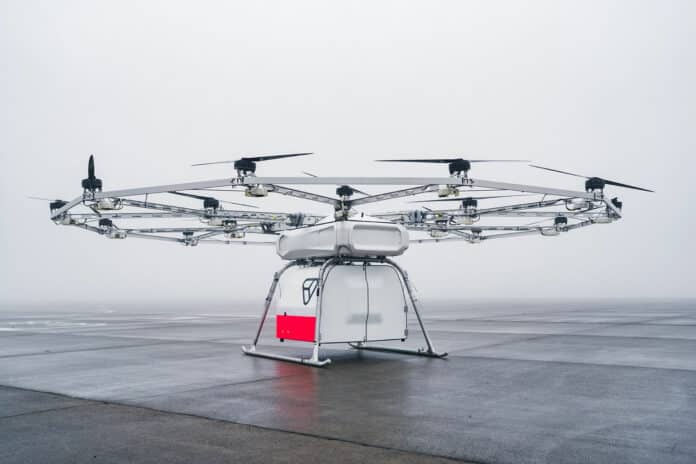Volocopter has been testing its air taxi and cargo drone for some time now. Most recently, it has completed a two-week test flight campaign for the VoloDrone, its multirotor heavy-lift cargo carrier.
The heavy-lift cargo carrier got to show its capabilities during an extensive test campaign at the DLR National Experimental Test Centre for Unmanned Aircraft, Magdeburg-Cochstedt Airport, Germany. The series of test programs were part of the European-funded CORUS-XUAM project for integrating unmanned traffic management (UTM) within digital air traffic management (ATM).
This latest CORUS-XUAM test flight featured the VoloDrone’s remotely piloted/automated flights, with unforeseen circumstances and obstacles included in pre-determined flight routes. While the tests were physically carried out at the Magdeburg-Cochstedt Airport, the digital airspace simulated were those of Frankfurt Airport and London airports, which were scaled down accurately and mapped to fit the physical space of Cochstedt airfield. Each case study represented a different exercise for yielding to priority traffic and changing flight speeds to ease traffic flow management.
In the German use case, the VoloDrone simulated flying between Messe Frankfurt and the Frankfurt Airport and then diverted once the VoloIQ received an incoming signal from an Emergency Medical Services (EMS) aircraft’s priority landing at a hospital en route. In the UK case, the VoloDrone had to show that it could decrease its flight speed to create space for a safe approach and takeoff once it entered the congested airspace above busy London airports for better air traffic flow management.
In both instances, the digital interfaces of Volocopter’s VoloIQ and the U-Space Service Provider (USSP) worked together to successfully manage the VoloDrone’s flight path and speed, as well as priority-access vehicles and air traffic.
The features of the new-and-improved cargo drone were revealed during this test campaign. They included the adoption of scalable aluminum rotor beams, lightweight and durable fiberglass housing, and overhauled fuselage design. Volocopter’s VoloDrone claims an unprecedented cargo capacity of 200 kg (441 lbs) and a 40km (24.8 miles) range.
